Massive MIMO array antenna
Liu , et al. December 15, 2
U.S. patent number 10,868,590 [Application Number 16/524,212] was granted by the patent office on 2020-12-15 for massive mimo array antenna. This patent grant is currently assigned to AAC Technologies Pte. Ltd.. The grantee listed for this patent is AAC Technologies Pte. Ltd.. Invention is credited to Jianchuan Liu, Yuehua Yue.
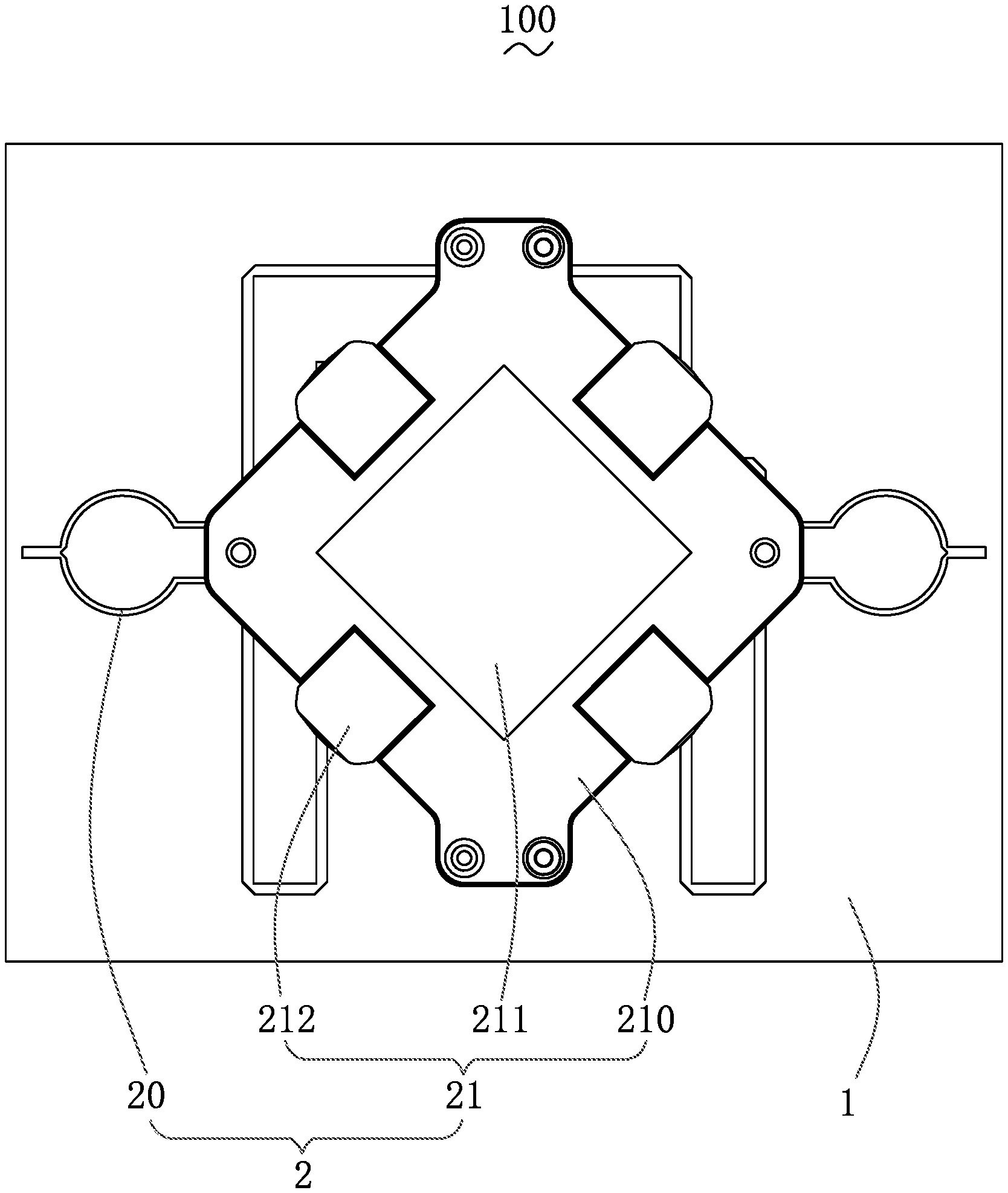
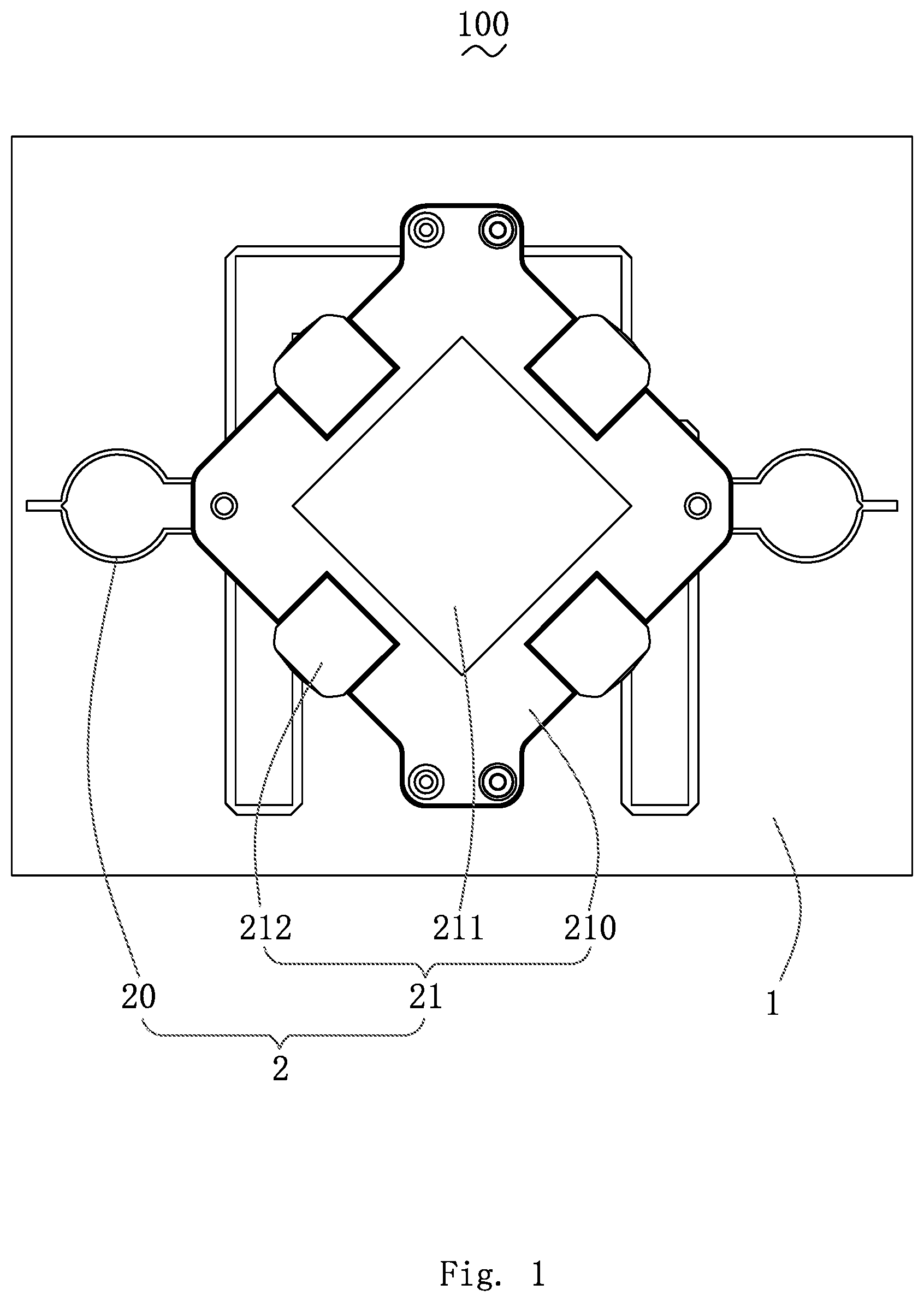
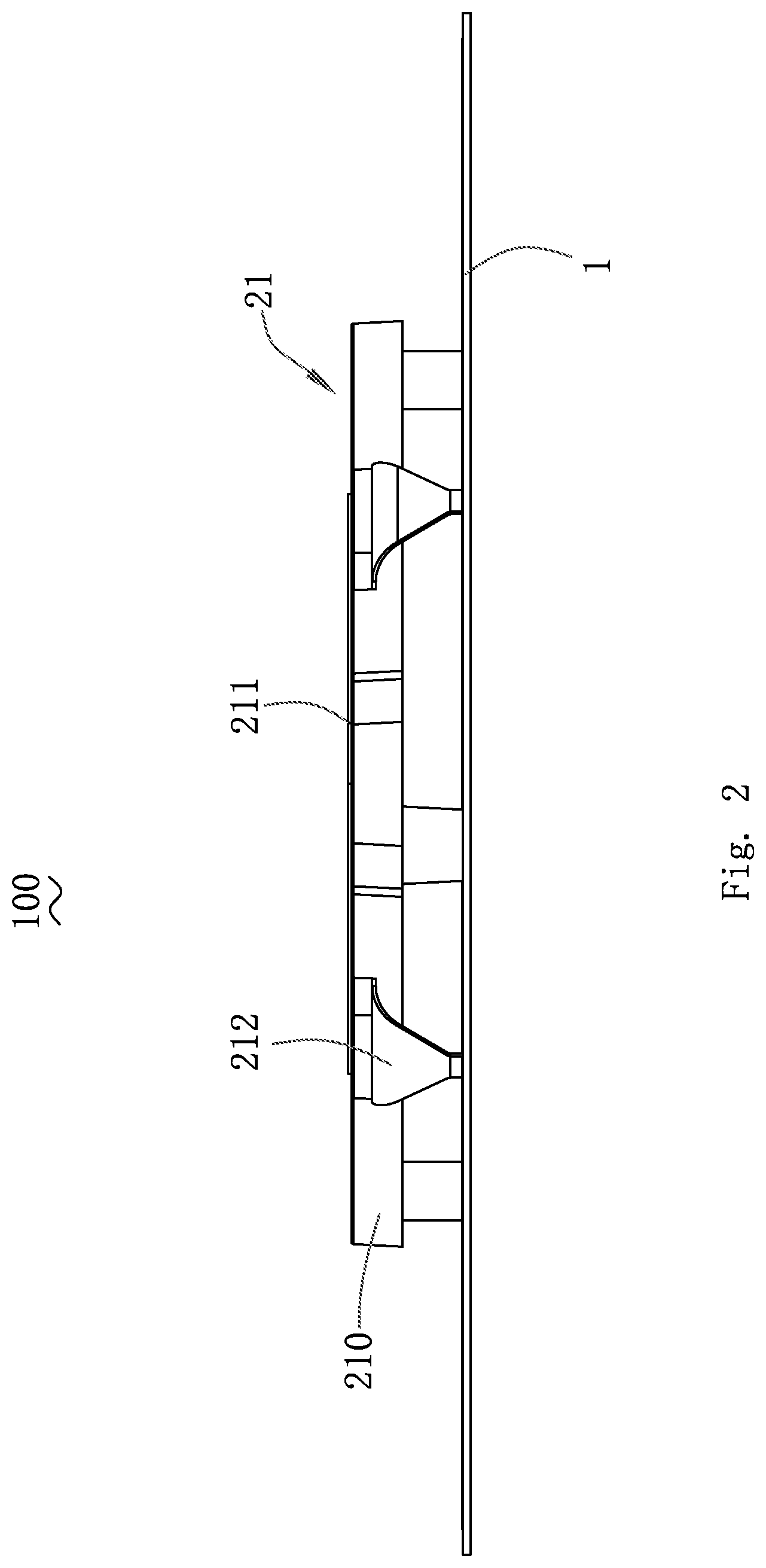


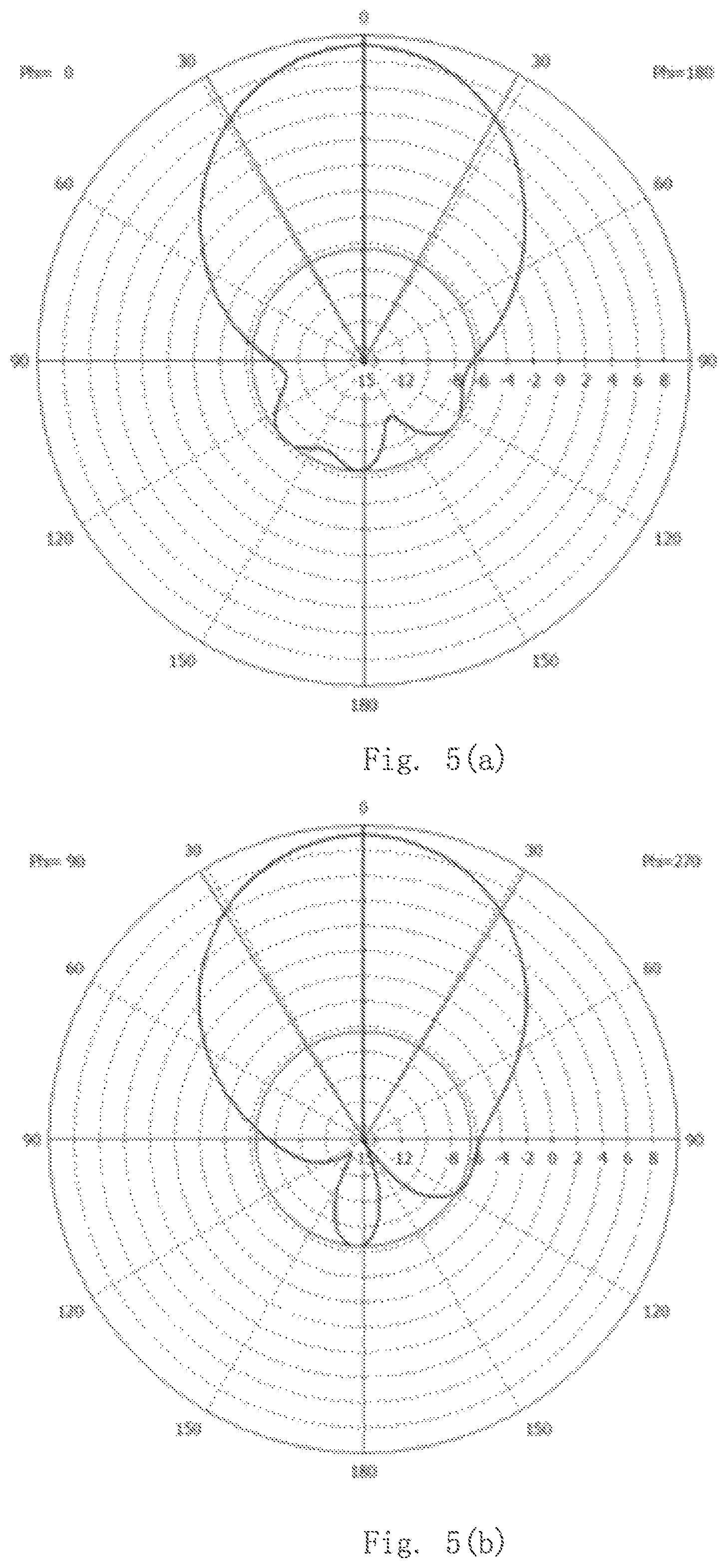
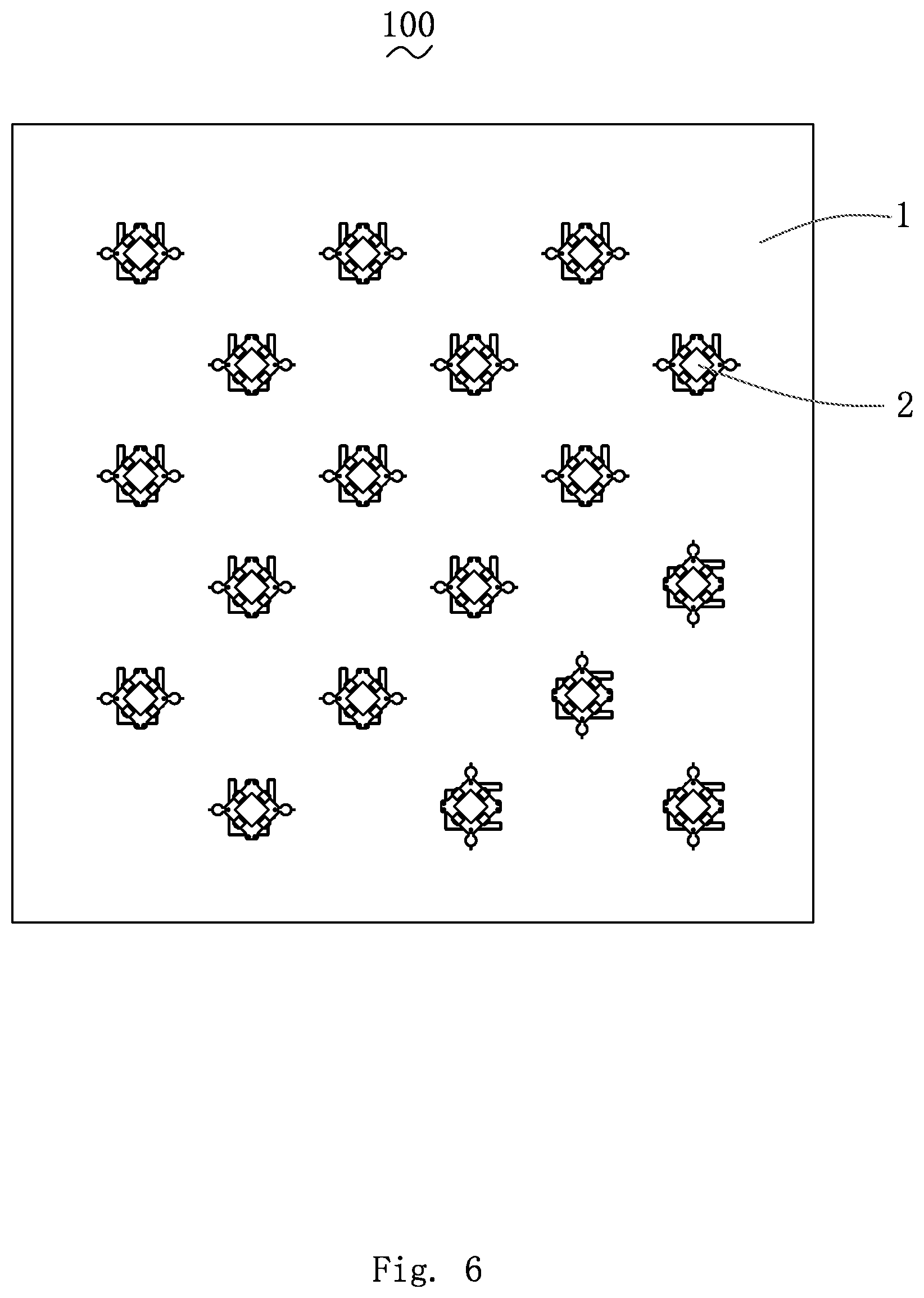
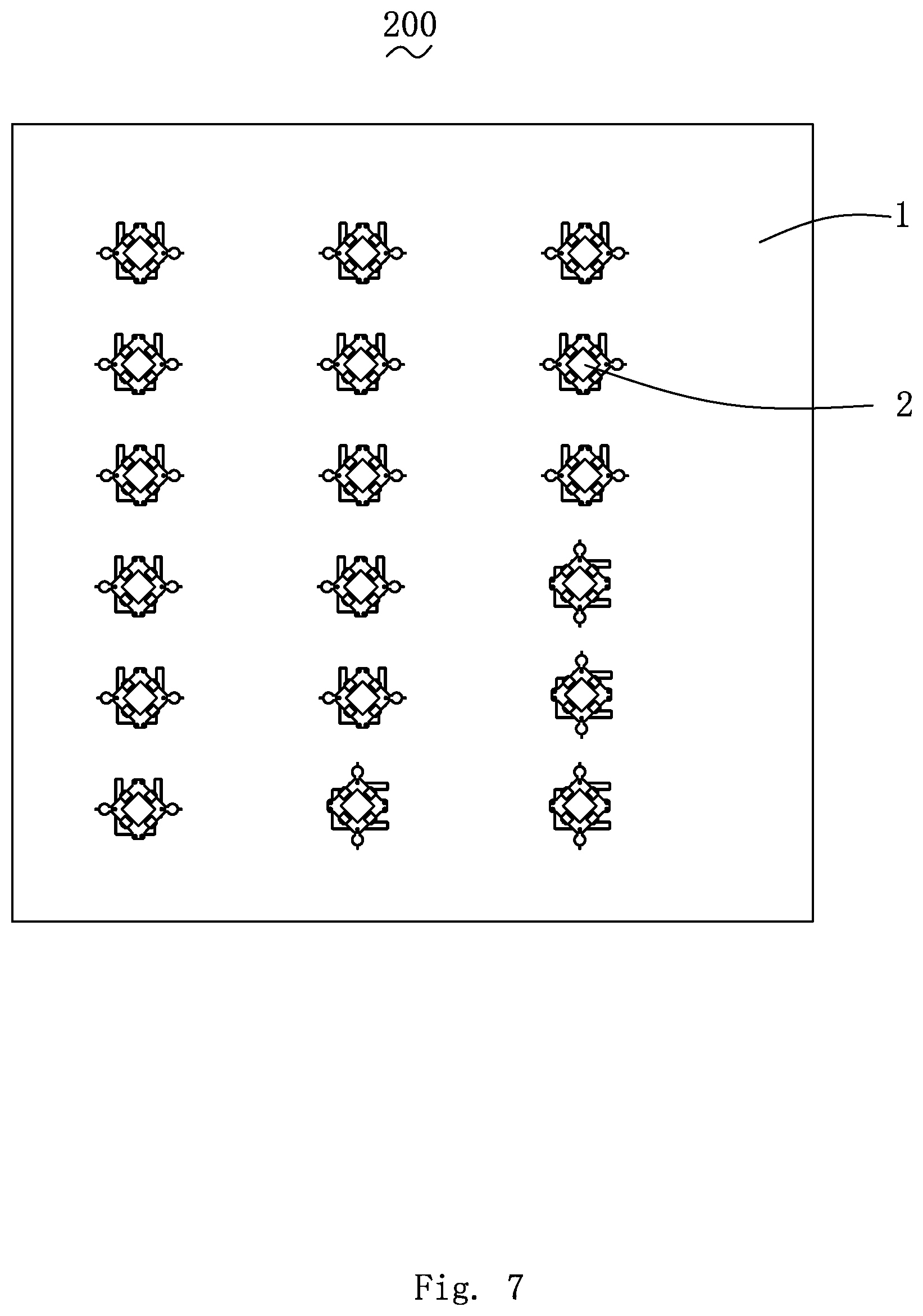
| United States Patent | 10,868,590 |
| Liu , et al. | December 15, 2020 |
Massive MIMO array antenna
Abstract
The present disclosure provides a massive MIMO array antenna comprising a PCB substrate and a plurality of antenna groups, each of the antenna groups comprises two feeding networks and one antenna unit, each antenna unit comprises an antenna bracket, a radiating piece and four coupling pieces, each of the feeding networks is electrically connected to two of the coupling pieces and performs coupling differential feeding on the radiating pieces by the two coupling pieces, each of the antenna groups is .+-.45.degree. orthogonal polarization.
| Inventors: | Liu; Jianchuan (Shenzhen, CN), Yue; Yuehua (Shenzhen, CN) | ||||||||||
|---|---|---|---|---|---|---|---|---|---|---|---|
| Applicant: |
|
||||||||||
| Assignee: | AAC Technologies Pte. Ltd.
(Singapore, SG) |
||||||||||
| Family ID: | 1000005246247 | ||||||||||
| Appl. No.: | 16/524,212 | ||||||||||
| Filed: | July 29, 2019 |
Prior Publication Data
| Document Identifier | Publication Date | |
|---|---|---|
| US 20200044698 A1 | Feb 6, 2020 | |
Foreign Application Priority Data
| Aug 3, 2018 [CN] | 2018 1 0875694 | |||
| Current U.S. Class: | 1/1 |
| Current CPC Class: | H04B 7/0452 (20130101); H01Q 21/061 (20130101); H01Q 1/2283 (20130101) |
| Current International Class: | H04B 7/0452 (20170101); H01Q 1/22 (20060101); H01Q 21/06 (20060101) |
References Cited [Referenced By]
U.S. Patent Documents
| 2018/0337461 | November 2018 | Kildal |
| 2019/0319364 | October 2019 | Yang |
| 2019/0326675 | October 2019 | Kim |
| 2020/0212591 | July 2020 | Liu |
Attorney, Agent or Firm: W&G Law Group LLP
Claims
What is claimed is:
1. A massive MIMO array antenna comprising a PCB substrate and a plurality of antenna groups disposed on the PCB substrate, wherein, each of the antenna groups comprises two feeding networks and one antenna unit, and the feeding network is configured for feeding the antenna unit, wherein, each antenna unit comprises an antenna bracket fixed to the PCB substrate, a radiating piece disposed on the antenna bracket, and four coupling pieces disposed on the antenna bracket and located outside a periphery of the radiating piece, each of the feeding networks is electrically connected to two of the coupling pieces and performs coupling differential feeding on the radiating piece through the coupling pieces, and each of the antenna groups is .+-.45.degree. orthogonally polarized.
2. The massive MIMO array antenna according to claim 1, wherein the radiating piece has a rectangular shape, and the four coupling pieces are respectively disposed corresponding to four sides of the radiating piece.
3. The massive MIMO array antenna of claim 2, wherein the two of the coupling pieces connected to each of the feeding networks correspond to two opposite sides of the radiating piece.
4. The massive MIMO array antenna according to claim 3, wherein each of the feeding networks comprises two feeding branches disposed on the PCB substrate, each of the feeding branches is connected to one of the coupling pieces, and the difference of the phases fed to the coupling pieces by the two feeding branches are 180.degree..
5. The massive MIMO array antenna according to claim 1, wherein the antenna unit has an operating frequency band of 3.4-3.6 GHz or 4.8-5 GHz.
6. The massive MIMO array antenna according to claim 1, wherein the plurality of antenna groups are spaced apart from each other on the PCB substrate with equal intervals.
7. The massive MIMO array antenna according to claim 6, wherein a plurality of the antenna groups form a planar array on the PCB substrate.
8. The massive MIMO array antenna according to claim 7, wherein each two adjacent columns of the antenna groups of the planar array are staggered.
9. The massive MIMO array antenna according to claim 7, wherein each two adjacent columns of the antenna groups of the planar array are aligned.
10. The massive MIMO array antenna of claim 1, wherein the massive MIMO array antenna is one of MIMO.
Description
TECHNICAL FIELD
The present disclosure relates to the field of antenna technologies, and in particular, to a massive MIMO array antenna.
BACKGROUND
The Ministry of Industry and Information Technology of the People's Republic of China has planned the following four frequency bands for China's 5G technology R&D trials: 3.3-3.6 GHz band, 4.8-5.0 GHz band, 24.75-27.5 GHz band, and 37-42.5 GHz band. It fully reflects the government's determination on supporting 5G international standards and technology verification and accelerating the development of 5G industry. Massive MIMO is undoubtedly one of the most critical technologies in 5G systems.
The use of massive antennas could significantly increase spectrum efficiency, especially when the capacity is required to be large or the coverage is wide, and it enables 4G networks to meet the requirement for network growth. From the operator's point of view, this technology has a good prospect, and thus it should be implemented in. 5G hardware in advance, and provide a 5G air interface function by software upgrade, so as to promote 5G deployment.
BRIEF DESCRIPTION OF THE DRAWINGS
In order to illustrate the technical solutions in the embodiments of the present disclosure more clearly, the drawings used in the description of the embodiments will be briefly described below. It is obvious that the drawings in the following description are only some embodiments of the present disclosure. To those skilled in the art, other drawings can be obtained according to these drawings without any creative work, wherein:
FIG. 1 is a top view illustrating the structure of a massive MIMO array antenna according to the present disclosure;
FIG. 2 is a side view illustrating the structure of a massive MIMO array antenna according to the present disclosure;
FIG. 3 is a schematic diagram illustrating a connection structure of a coupling piece and a feeding network in a massive MIMO array antenna according to the present disclosure;
FIG. 4 is a diagram illustrating the reflection coefficient and isolation degree of two MIMO antennas of a massive MIMO array antenna according to the present disclosure;
FIGS. 5(a) and 5(b) are diagrams illustrating the radiation direction of an antenna unit in a massive MIMO array according to the present disclosure;
FIG. 6 is a schematic diagram illustrating an array of antenna units on a PCB substrate in a massive MIMO array antenna according to the present disclosure;
FIG. 7 is another schematic diagram illustrating an array of antenna units on a PCB substrate in a massive MIMO array antenna according to the present disclosure.
DETAILED DESCRIPTION
The technical solutions in the embodiments of the present disclosure will be clearly and completely described in conjunction with the drawings in the embodiments of the present disclosure. It is obvious that the described embodiments are just a part but not all of the embodiments of the present disclosure. All other embodiments obtained by those skilled in the art based on the embodiments of the present disclosure without creative efforts would fall within the scope of the present disclosure.
Referring to FIGS. 1 to 3, an embodiment of the present disclosure provides a massive MIMO array antenna 100 with an operating frequency band of 3.4-3.6 GHz or 4.8-5 GHz, which is suitable for the 5G mobile communication system. The massive MIMO array antenna 100 comprises a PCB substrate 1 and a plurality of antenna groups 2 disposed on the PCB substrate 1. The number of the antenna groups 2 is an even number, and the even number of antenna groups 2 are spaced apart from each other on the PCB substrate 1 with equal intervals, each of the antenna groups 2 achieves a .+-.45.degree. orthogonal polarization. It should be noted that the operating frequency band of the massive MIMO array antenna 100 depends on a size of antenna, and the size could be adjusted according to application requirements so as to achieve the corresponding operating frequency band, and it is not limited to 3.4-3.6 GHz or 4.8-5 GHz.
Each of the antenna groups 2 comprises two feeding networks 20 and one antenna unit 21, and the feeding networks 20 are configured for feeding the antenna unit 21. The antenna unit 21 comprises an antenna bracket 210 fixed to the PCB substrate 1, a radiating piece 211 disposed at a center of the antenna bracket 210, and four coupling pieces 212 disposed on the antenna bracket 210 and located outside the periphery of the radiating piece 211. The coupling pieces 212 is spaced apart from and coupled to the radiating piece 211. Each of the feeding networks 20 is electrically connected to the two coupling pieces 212 and performs coupling differential feeding on radiating piece 211 by the two coupling pieces 212, so that the antenna isolation degree of the antenna unit 21 could be effectively improved.
The two coupling pieces 212 connected to each of the feeding networks 20 correspond to two opposite sides of the radiating piece 211. Each of the feeding networks 20 comprises two feeding branches 213 disposed on the PCB substrate 1, and each of the feeding branches 213 is connected to one of the coupling pieces 212, and difference of the phases fed to the coupling pieces 212 by the two feeding branches 213 is 180.degree..
The four coupling pieces 212 are divided into two groups and each group includes two coupling pieces, and a coupling differential feeding is performed on radiating piece 211 by each group of the coupling pieces respectively, and each group of the coupling pieces 212 form one MIMO antenna together with the radiating piece 211. Therefore, when there are four coupling pieces 212, the antenna unit 20 has two MIMO antennas. Referring to FIG. 4, the antenna isolation degree of the two MIMO antennas could reach -30 db or less. Thus, the present disclosure provides a good antenna isolation degree for the antenna unit 20 by adopts a coupling differential feeding.
The radiating piece 211 has a rectangular shape, and the four coupling pieces 212 are respectively disposed corresponding to the four sides of the radiating piece 211, where, the two coupling pieces 212 of each group (each group includes two coupling pieces) are disposed on opposite sides of the radiating piece 211 to achieve .+-.45.degree. orthogonal polarization, and one antenna group 2 could simultaneously implement transceiving and 2.times.2 MIMO antennas.
The radiation directions of the massive MIMO array antenna 100 are shown in FIGS. 5(a) and 5(b).
Referring to FIG. 6, since the massive MIMO array antenna 100 provided by the present disclosure has a simple structure, a plurality of the antenna groups 2 could be arranged on the PCB substrate 1 in a manner of a massive array. In FIG. 6, there are a total of 18 antenna groups 2, each of the antenna groups 2 achieves .+-.45.degree. orthogonal polarization, thus 36 signal transmission paths are achieved. Of course, the present application does not limit the number of antenna groups 2, and in other embodiments, the number of antenna groups 2 could be selected according to installation environments, i.e., performance requirements. In addition, in FIG. 6, in order to save space, each column of antenna groups 2 are staggered. In other embodiments, each column of antenna groups 2 may also be aligned, such as the massive MIMO array antenna 200 in FIG. 7.
Compared with the related art, the massive MIMO array antenna provided by the present disclosure has at least one of the following beneficial effects:
1) By adopting coupling differential feeding, the antenna isolation degree of the antenna unit is good;
2) An orthogonal .+-.45.degree. polarization is achieved, so that one antenna group could implement transceiving as well as 2.times.2 MIMO;
3) The antenna has high gain and good performance;
4) The structure is simple and easy to implement massive antenna array layout;
5) The spectral efficiency is high, The network coverage is flexible and the capacity gain is significant high.
The above is only embodiments of the present disclosure, and it should be noted that those skilled in the art can make improvements without departing from the concept of the present disclosure, but these improvements all fall in the protection range of the present disclosure.
* * * * *
D00000

D00001

D00002

D00003

D00004

D00005

D00006

D00007

XML
uspto.report is an independent third-party trademark research tool that is not affiliated, endorsed, or sponsored by the United States Patent and Trademark Office (USPTO) or any other governmental organization. The information provided by uspto.report is based on publicly available data at the time of writing and is intended for informational purposes only.
While we strive to provide accurate and up-to-date information, we do not guarantee the accuracy, completeness, reliability, or suitability of the information displayed on this site. The use of this site is at your own risk. Any reliance you place on such information is therefore strictly at your own risk.
All official trademark data, including owner information, should be verified by visiting the official USPTO website at www.uspto.gov. This site is not intended to replace professional legal advice and should not be used as a substitute for consulting with a legal professional who is knowledgeable about trademark law.